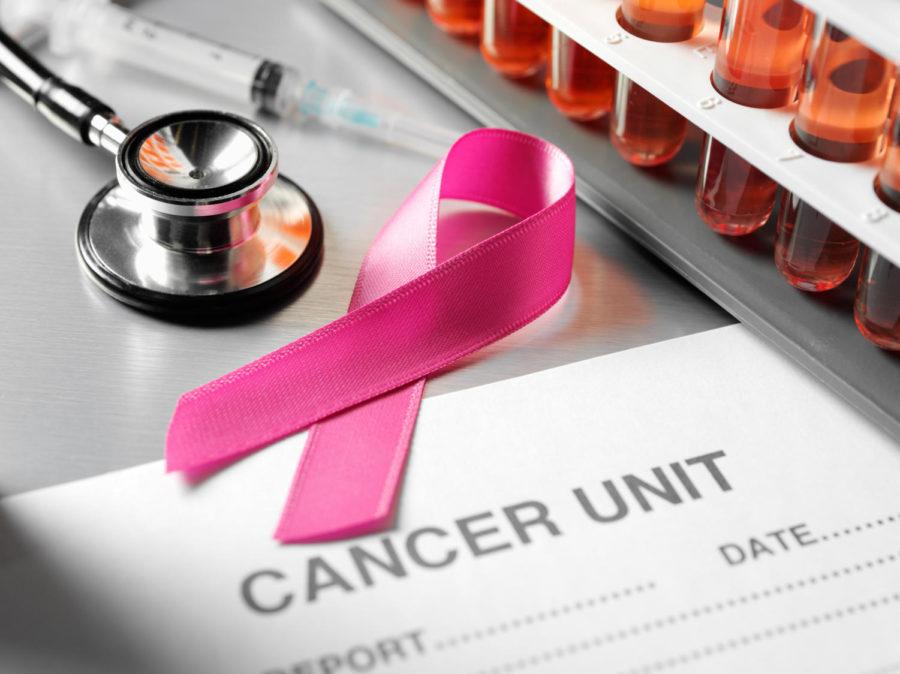Lawson: Think before you pink: Where are your donations really going?
October 14, 2015
Imagine a world without breast cancer, a world where bad things don’t happen to good people. Breast cancer has made enemies, survivors and fallen fighters of too many people.
October presents an overwhelming sense of urgency to donate to the organization that shares one common mission — end breast cancer.
But what does it mean when one non-profit CEO is making more than $400,000, and allegations are being made that only 20 percent of funds are actually going to research? Are we striving for a better tomorrow or looking to fatten our pockets off of the generosity of the public?
October is Breast Cancer Awareness Month, as most of you probably know, and one of the largest allies in this nation-wide affair is the Susan G. Komen Breast Cancer Foundation. The Susan G. Komen Breast Cancer Foundation is a nonprofit organization that was founded in 1982 by Nancy G. Brinker. It holds several fundraising activities, and the the most successful campaign is Race for the Cure.
The pink light that Susan G. Komen shines so brightly has been dimmed by scandal the last few years. The reason is the amount of compensation that is given to its CEO. When your organization’s purpose is to end cancer, I’m not sure how you can justify compensating a CEO with a base salary of $475,000 and paying at least seven other employees $150,000 and another five $250,000.
That doesn’t seem right to me. If your mission is to end breast cancer, I don’t think people in the service of humanity should be drawing in such large salaries. Being properly compensated for your time is vital for the success in any company. It appears that companies that gain the majority of their money from charitable donations and event sponsorships are double-dipping in these funds.
I cannot dispute the amount of work and progress that the Susan G. Komen Breast Cancer Foundation has contributed. These numbers raise a lot of concern for the people who donate their hard-earned money to a cause, expecting to help make a difference.
An image circulating social media sites has helped fuel a fire under the organization by showing donors where their money is actually going.
The image is lime green and contains two very unnerving facts. The first is that the CEO of Susan G. Komen makes $684,000. The second is that it gives just less than 20 percent of donations to cancer research.
When I saw this, my heart sank and I became infuriated. I did some research and found out that these statements are true, according to Susan G Komen’s annual fiscal report.
Nancy G. Brinker, founder and CEO until 2014, made $684,000. Her base salary in 2012 was $548,785, and her $125,000 bonus gave her an annual salary of more than $700,000. The Susan G. Komen allocates 18 percent of its spending to cancer research.
When I think back to all the people in my life who have, in one way or another, been touched the Susan G. Komen brand, I wonder how much of what I’ve purchased from and donated to the foundation went to the cause or the CEO.
The Susan G. Komen foundation received $308,433,590 in public contributions in 2013. Where did that money actually go? I have yet to find an actual breakdown in its fiscal year reports that explain exactly where the money went that year. Since Susan G. Komen is a publicly-funded organization, that information should be available to view.
Susan G. Komen is not the only foundation that strives to end cancer. Many other organizations exist that are reputable and do not have as much controversy as Susan G. Komen. These companies have a shared mission to end cancer but do not have the same clouded financial reports.
The Breast Cancer Research Foundation, Sisters Network Inc., Dana-farber Cancer Institute, Breast Cancer Fund and Living Beyond Breast Cancer are a few great organizations that more people should become involved with and donate to.
Knowing where your donations are going and trusting that organization to do the right thing should not have to be an uphill battle.
Having donations go toward overhead and expenses is expected, but these organizations should not take advantage of people’s generosity. We donate because we want to stop watching our mothers, sisters, aunts and friends fight breast cancer. No one who donates should have to wonder if we are actually getting closer to reaching that goal.

















